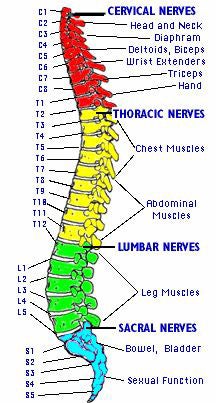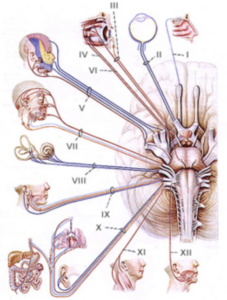Rapid Neurological Exam
Overview
This page is designed for the average diver (non-medical professional). It gives you basic information to help you perform a quick neurological examination if you suspect someone may be suffering from the bends (decompression sickness), air embolism, or other medical problems following diving.
This neurological examination, when conducted on a person with a history of diving, is used to determine the presence or absence of symptoms of decompression sickness and/or air embolism involving the central nervous system. Prior to performing the neurological exam, ensure that the diver is conscious & stable (and is breathing oxygen if available). Remember, it is essential for you to activate your local Emergency Medical Services as soon as signs and symptoms are detected.
Rapid Neurological Exam Video
The above video shows one way to perform an initial Rapid Neurological Exam. This basic examination does not require any medical training and can be done by anyone (the simplest way to report the various results of a neurological exam are “normal” or “abnormal”). This examination can provide a baseline of neurological findings (or no findings) which can be compared to subsequent neurological examinations conducted by emergency medical personnel and physicians. This baseline can help determine if the patient’s symptoms are worsening, lessening, or staying the same. In some cases initial neurological symptoms may be gone by the time the patient arrives at a treatment facility and the only indication of neurological dysfunction may be the notes from this initial Rapid Neurological Exam.
Motor/Strength & Sensory

If there is a lesion (damaged area) in the Spinal Cord the Motor/Strength and Sensory exam can be used to determine where the damaged area may be. The simplest way to report the various results of a neurological exam are Normal or Abnormal. When testing muscle strength, if the muscle feels weak it can be reported as Abnormal. A more comprehensive method for reporting muscle strength is the following scale from 0 to 5:
- 5/5 – Normal strength
- 4/5 – Weakness against resistance
- 3/5 – Able to move against gravity, but not against resistance
- 2/5 – Able to move with gravity eliminated (perpendicular to gravity)
- 1/5 – Unable to move but flicker or trace of muscle contraction present
- 0/5 – No sign of muscle contraction
Cranial Nerves

The neurological exam performs many tests at the head of the patient. These are to test if Cranial Nerve function is intact. The exam tests the twelve Cranial Nerves:
- I – Olfactory / Smell
- II – Optic / Vision
- III – Oculomotor / Eye Movement & Pupil Size
- IV – Trochlear / Eye Movement
- V – Trigeminal / Facial Sensation
- VI – Abducens / Eye Movement
- VII – Facial / Facial Motor – Expressions
- VIII – Acoustic / Hearing – Balance
- IX – Glossopharyngeal / Swallowing
- X – Vagus / Swallowing – Heart Rate
- XI – Spinal Accessory / Shoulder & Neck Movement
- XII – Hypoglossal / Tongue Movement
More information and tutorials on neurological examinations can be found at:
- Neurological examinations for divers
- General neurological examinations
Acknowledgement:
We would like to thank Steve Barsky and Hammerhead Video for the donation of the time and effort required to produce this video.You can download the above video from Drop Box (as a zipped file) at: Neuro.zip
Rapid Neurological Exam Checklist
- Mental Status:
- Alertness – Does patient seem to be aware of what is going on and able to communicate appropriately
- Orientation – Does patient know who they are, how old are they, where they are, what date/day it is, what have they been doing
- Memory* – Ask patient to remember an three objects then later in the exam ask the patient to recall the objects
- Calculation* – Have patient count backwards from 100 by sevens
- Cranial Nerves:
- Eyes – Can patient see, is vision normal, is eye movement normal
- Hearing – Can patient hear equally in both ears, is hearing normal
- Smell – Can patient smell (coffee, peppermint, etc.)
- Facial Muscles – Is the face equal in muscle tone and control, have patient smile
- Tongue – Can patient control tongue movement, it should stick straight out
- Gag Reflex – Does the “Adam’s Apple” move when patient swallows
- Facial Sensation – Can patient feel light touch equally on both sides of their face
- Shoulders – Can patient raise their shoulders equally against resistance
- Muscle Strength against resistance (using 0-5 scale):
- Arms:
- Lift arms away from side
- Push arms towards side
- Pull forearm towards upper arm
- Push forearm away from upper arm
- Lift wrist up
- Push wrist down
- Squeeze examiners finger
- Pull fingers apart*
- Squeeze fingers together*
- Legs:
- Lift legs up
- Push legs down
- Pull legs apart*
- Push legs together*
- Pull lower leg towards upper leg
- Push lower leg away from upper leg
- Push feet away from legs
- Pull feet towards legs
- Arms:
- Sensory (have patient close eyes while checking sensory perception):
- Light Touch* – Can patient feel light touch equally on both sides of the body
- Sharp/Dull – Can patient distinguish between a sharp or dull object on both sides of the body
- Hot/Cold* – Can patient distinguish between a hot or cold object on both sides of the body
- Coordination* (on any test requiring a patient to stand make sure someone is there to support them):
- Have the patient touch their nose with their index finger of each hand with eyes shut
- Have the patient rapidly slap one hand on the palm of the other, alternating palm up and then palm down – test both sides
- Have the patient walk heel to toe in a straight line – forwards and backwards
- While standing, have the patient touches the heel of one foot to the knee of the opposite leg, and while maintaining this contact, have them run the heel down the shin to the ankle – test each leg
- With eyes closed, have the patient stand with feet together and arms extended to the front, palms up
*Test not shown on video
Sources
- The Standard Neurological Examination
– Gordon Boivin - A Broad Outline of the Neurological Exam
– Dr. Jeff Sipsey - Patient Assessment Overview
– NAUI Workbook - Neurological Examination
– US Navy Diving Manual
Contact Us
USC Catalina Hyperbaric Chamber
P.O. Box 5069
1 Big Fisherman Cove
Avalon, CA 90704
Helipad Coordinates
33º 26′ 41.171″ N
118º 29′ 00.841″ W
Coordinate System: WGC 84
Link to Preferred Flight Path
Emergency Numbers
Catalina Chamber 24 Hour Emergency Line
(310) 510-1053
LA County Medical Alert Center (MAC)
(866) 940-4401
U.S. Coast Guard Sector LA/Long Beach Search & Rescue
(310) 521-3815
Marine Channel 16
Divers Alert Network (DAN) Emergency Line
(919) 684-9111